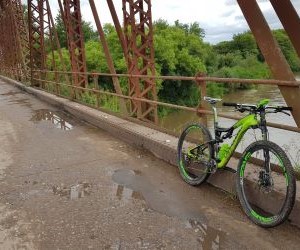Master endurance cycling in tropical climates with effective strategies. Learn hydration, heat adaptation, and training tips for peak performance.
HOW DO I TRAIN FOR CYCLING EFFICIENCY?
Cycling efficiency isn’t just about going faster—it’s about getting more output from less input. Whether you're racing, training, or commuting, improving your efficiency allows you to conserve energy, ride longer, and avoid burnout. In this article, you’ll learn how to train specifically for cycling efficiency by focusing on biomechanics, aerobic development, muscle engagement, and smart gear use. From cadence drills to strength training and posture hacks, this evidence-based guide will help you ride smoother, smarter, and stronger.

Master your cadence and pedal technique
One of the core pillars of cycling efficiency is cadence—the speed at which you pedal. Efficient riders maintain a smooth cadence of 85–95 RPM, which reduces muscular fatigue and relies more on aerobic endurance. High-cadence riding helps you preserve glycogen and reduces joint stress, especially during long rides.
To improve cadence, incorporate drills that train neuromuscular coordination. Fast-pedaling sets (spinning at 100+ RPM in low resistance) teach leg speed and reduce dead spots in your stroke. At the same time, pedaling technique should focus on a full 360° stroke—not just the push-down phase.
Cadence and technique drills
Spin-ups: Gradually increase cadence to 120+ RPM in 30-second bursts
Single-leg drills: Pedal with one leg for 30 seconds to eliminate dead zones
High-cadence zone 2 rides: 90–95 RPM in easy gear for 45–60 mins
Isolated leg training (ILT): Use resistance to focus on one quadrant of the pedal stroke
Low-cadence strength work: 60–70 RPM uphill to build torque
Use a cadence sensor and power meter to track improvements. Aim to maintain your optimal cadence even as you fatigue—this is where efficiency pays off. Over time, your body learns to pedal with less effort, smoother motion, and higher mechanical return.
Efficient pedaling is more than habit—it’s a trained skill. Commit to these drills weekly, and your body will naturally default to more economical movement.
Improve body position and bike fit
You can be the fittest rider on the road, but if your position is off, you’re wasting watts. Aerodynamic drag and poor biomechanics both sabotage efficiency. The two biggest gains here come from professional bike fitting and conscious posture work on the bike.
A proper bike fit ensures optimal saddle height, reach, cleat position, and handlebar drop. This minimizes joint strain, improves power transfer, and boosts comfort—especially on long rides. Meanwhile, your riding posture should focus on a flat back, tucked elbows, and relaxed shoulders to reduce wind resistance and muscle tension.
Posture and fit efficiency checklist
Flat back with neutral spine—not rounded or arched
Elbows slightly bent and tucked in
Knees tracking close to the top tube
Even pressure through the pedals, especially at the bottom of the stroke
Maintain a light grip on the handlebars to avoid upper body fatigue
A bike fit session with a professional may seem like a luxury, but it can yield massive performance dividends. Even small adjustments—like a 5mm saddle change—can improve knee tracking and eliminate power leaks.
Finally, use a mirror or video to analyze your position mid-ride. Many inefficiencies go unnoticed without visual feedback. Once you’re dialed in, efficient posture becomes second nature—even at high intensity.
Train your aerobic base and muscular endurance
True cycling efficiency comes from engine development. A strong aerobic base lets you ride at a higher output using less energy, while muscular endurance allows you to maintain that output over time. Together, they form the physiological foundation for efficient performance at all distances.
Zone 2 training—riding at 60–75% of max heart rate—is essential. It improves fat oxidation, capillary density, and mitochondrial function, all of which make you more energy-efficient. Layer in strength work on the bike (low cadence climbing) and off the bike (core, glutes, and hamstrings), and you’ll create a body that rides longer and recovers faster.
Workouts to build lasting efficiency
Zone 2 endurance rides: 90–180 minutes weekly
Sweet spot intervals: 88–94% of FTP for 8–12 minutes
Low cadence tempo: 60 RPM hill repeats in zone 3
Strength training: Deadlifts, squats, planks 2–3x/week
Off-bike mobility: Yoga or dynamic stretching to maintain posture
Don’t neglect recovery—true adaptations happen during rest. Add HRV tracking or resting HR monitoring to ensure you’re absorbing the training load effectively. Overreaching leads to fatigue, not efficiency gains.
Efficiency isn’t just mechanical—it’s metabolic. The more oxygen you can process per watt produced, the more efficient and durable you become on every ride, from time trials to coffee spins.
YOU MAY ALSO BE INTERESTED






